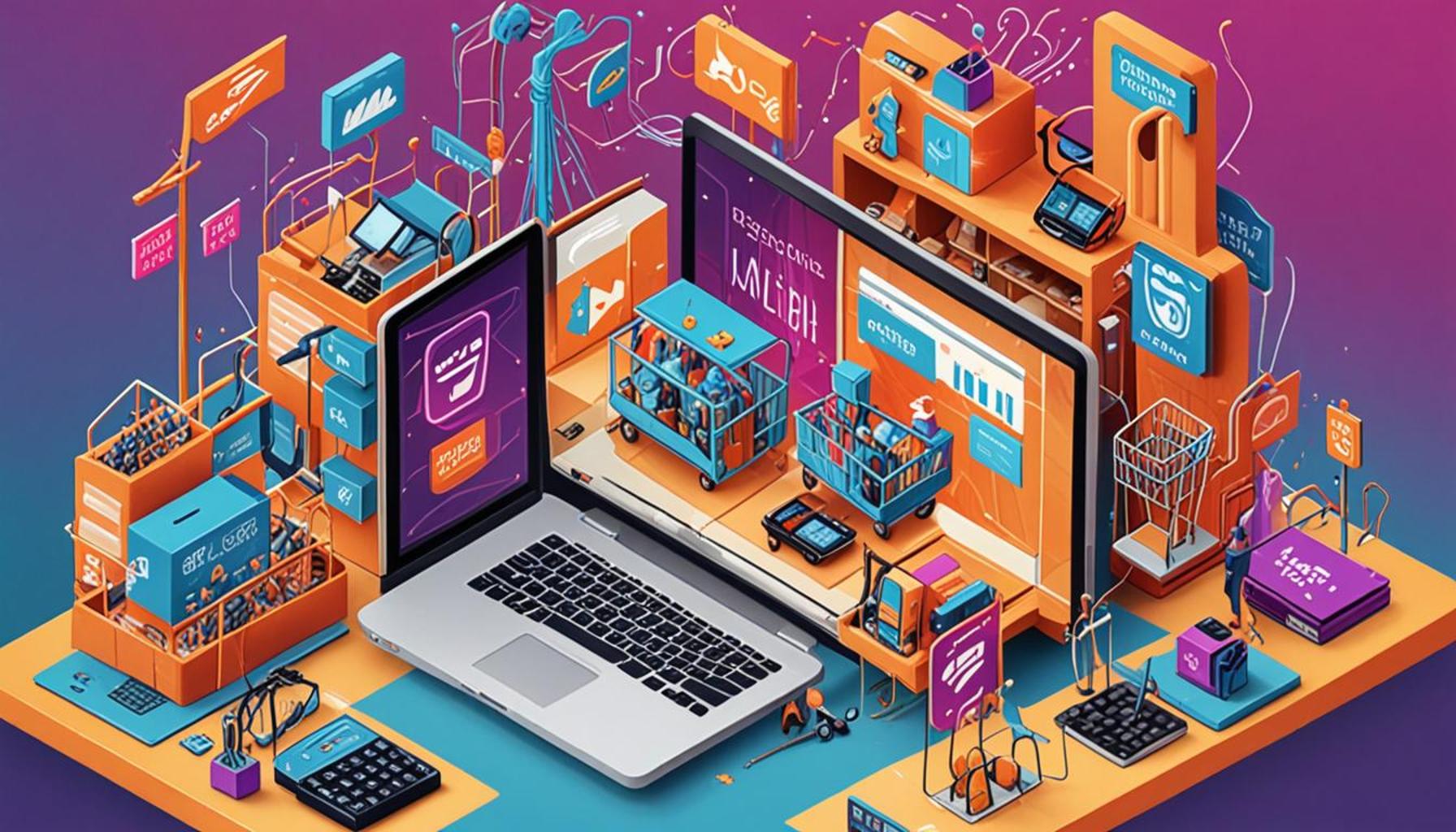The role of digital platforms in disseminating information about government benefits for entrepreneurs

Understanding Government Benefits for Entrepreneurs
In today’s fast-paced digital age, entrepreneurs are constantly seeking accessible information about government benefits. These benefits can be crucial for driving innovation and supporting sustainable business growth. However, the challenge lies in effectively disseminating this information to the right audience. Many entrepreneurs navigate a complex landscape of regulations, financial aid opportunities, and various forms of assistance that are available, yet often remain underutilized.
Digital platforms have emerged as powerful tools in this endeavor. They serve as hubs where vital information can be shared widely and efficiently. Notably, these platforms include:
- Social media networks (e.g., Facebook, Twitter, LinkedIn): These platforms allow for real-time updates and community interactions that can help entrepreneurs stay informed about new government programs and changes. For example, small business owners can join groups on Facebook that focus on grants and loans, where members share personal success stories and tips for applying.
- Government websites and portals: Official sites like the Small Business Administration (SBA) and Grants.gov provide comprehensive resources, detailed guides, and access to funding opportunities. Entrepreneurs can explore information regarding eligibility requirements for various government-backed loans and grants through these concise, authoritative sources.
- Entrepreneurial blogs and newsletters: Many industry experts offer insights into government benefits through blogs and newsletters tailored specifically for entrepreneurs. These platforms often break down complicated information into digestible formats, making it easier for business owners to understand their options.
- Mobile applications focused on business resources: With the rise of technology, several apps help entrepreneurs track deadlines for grant applications, connect with mentors, and access federal resources right from their smartphones. Apps like Hello Alice provide personalized funding recommendations for small business owners based on their specific needs and sector.
Each platform offers unique features that can enhance visibility and engagement. For instance, social media enables entrepreneurs to engage with peers and industry leaders directly, fostering a sense of community while facilitating knowledge sharing. Government websites, on the other hand, serve as definitive sources, giving users access to reliable information and documentation needed for applications.
As the landscape of digital communication evolves, so too does the manner in which information about government benefits can be effectively conveyed. This article delves into smart strategies and practical examples of how these platforms play a pivotal role in connecting entrepreneurs with essential resources. By adopting a proactive approach to utilizing these digital tools, entrepreneurs can significantly enhance their chances of securing the funding and support necessary for thriving in competitive markets.
SEE ALSO: Click here to read another article
The Impact of Digital Platforms on Information Dissemination
In an era defined by rapid technological advancements, digital platforms have revolutionized the way information about government benefits for entrepreneurs is circulated. With more than 90% of Americans now engaged in some form of online activity, the significance of these platforms cannot be overstated. They not only serve as conduits for communication but also actively shape the strategies entrepreneurs use to access vital resources.
One of the most transformative aspects of digital platforms is their ability to foster community and encourage user-generated content. Small business owners, particularly those in their nascent stages, often find solace and valuable insights within digital communities. Platforms such as Facebook groups dedicated to entrepreneurship provide a collaborative environment where individuals can exchange experiences, discuss new opportunities, and disseminate information about available government assistance programs. By participating in these groups, entrepreneurs can learn about specific programs, application tips, and even timelines, leading to improved success rates in securing funding.
Moreover, social media channels and their fast-paced nature allow for real-time updates that are essential in today’s dynamic market landscape. Consider the often time-sensitive nature of grant applications—information can change quickly based on governmental policies or funding availability. Entrepreneurs who follow relevant agencies or advocacy groups on platforms like Twitter or LinkedIn can receive instantaneous updates, ensuring they have the most current data at their fingertips. This immediacy allows entrepreneurs to adapt swiftly and apply for resources that may otherwise be overlooked.
Another critical function of digital platforms is the curation of valuable content. Government websites like the Small Business Administration (SBA) and Grants.gov offer centralized repositories of information that consolidate disparate resources. These sites not only provide details on eligibility requirements but also host webinars and instructional videos that further aid entrepreneurs. For example, the SBA’s YouTube channel features step-by-step guides on how to apply for various funding opportunities, making the process less daunting for newcomers.
Moreover, entrepreneurial blogs and newsletters have also emerged as credible sources of information. Influential thought leaders in business frequently publish articles that demystify the intricacies of government funding and support. By summarizing complex information into easily digestible content, these platforms empower entrepreneurs to navigate the landscape with greater confidence. Subscription services to these newsletters are becoming increasingly popular, allowing readers to receive tailored insights directly to their inbox.
In conjunction with these resources, the advent of mobile applications has further streamlined access to critical information. Apps like Hello Alice and Fundera provide tailored recommendations that can match entrepreneurs with suitable government benefits based on their unique business challenges. This personalized approach not only simplifies the process but also enhances engagement by making resources readily available and actionable.
The potency of digital platforms lies in their multifaceted nature. They not only inform but also engage, connect, and empower entrepreneurs. As government benefits remain an essential lifeline for business growth and sustainability, leveraging these platforms effectively can mean the difference between thriving in a competitive market and falling behind. Consequently, understanding the role of digital tools in disseminating information is vital for any entrepreneur aiming for success.
| Category | Description |
|---|---|
| Access to Resources | Digital platforms serve as a hub for crucial information, offering entrepreneurs easy access to government benefits available to them, such as grants and loans. |
| Real-Time Updates | Immediate dissemination of information ensures entrepreneurs are informed about new programs or changes, maximizing their opportunities to benefit from available resources. |
Digital platforms are revolutionizing how information regarding government assistance reaches entrepreneurs. By using these online tools, business owners have unparalleled access to a wide range of resources specifically tailored to their needs. For example, platforms such as social media and websites designed for small businesses act as conduits, connecting users with not just funding options, but also advisory services and workshops.Moreover, the ability for such platforms to offer real-time updates enhances the effectiveness of communication, allowing entrepreneurs to quickly adjust their strategies in response to changing government policies or newly available programs. This timely access to data helps ensure that no potential opportunity is overlooked, fostering a more robust entrepreneurial ecosystem capable of thriving amidst challenges. As these technologies continue to evolve, we are likely to see even more innovative ways in which information about government benefits is distributed, including interactive webinars and mobile apps. The reach and impact of these digital platforms are poised to grow, becoming an essential part of any entrepreneur’s toolkit for success.
LEARN MORE: This related article may interest you
Enhancing Accessibility and User Experience
As entrepreneurs increasingly turn to digital platforms for information about government benefits, the focus on accessibility and user experience has never been more critical. The design and functionality of these platforms can greatly influence an entrepreneur’s ability to ascertain necessary resources. A user-friendly website or application can serve as a launchpad, enabling entrepreneurs to search, filter, and compare different aid programs effectively, minimizing the time spent on research.
Accessibility features play a vital role in extending these benefits to all entrepreneurs, including those with disabilities. Websites that adhere to Web Content Accessibility Guidelines (WCAG) ensure that information is available to users who rely on assistive technologies. Initiatives by the U.S. government to improve digital accessibility have been bolstered by platforms like the U.S. Digital Service, which consistently pushes for more inclusive online environments. By ensuring that all entrepreneurs, regardless of ability, can navigate government resources, these platforms foster a comprehensive ecosystem of support.
Search engine optimization (SEO) strategies employed by government websites and NGOs further enhance discoverability. When entrepreneurs type queries related to grants, loans, or technical assistance into search engines, high-ranking pages can deliver essential information at lightning speed. Effective SEO practices—such as keyword integration, page speed optimization, and mobile responsiveness—enable agencies to meet entrepreneurs where they are, ensuring they find relevant support without sifting through extraneous data. According to recent statistics, nearly 80% of users will only review the first few links in search engine results, underscoring the importance of SEO in maximizing outreach.
The Role of Online Training and Resources
Beyond just information dissemination, digital platforms are enriching the entrepreneurial community with online training programs. Organizations like SCORE and the Small Business Development Center (SBDC) leverage the power of webinars and online courses to educate entrepreneurs about the nuances of government benefits. These platforms provide detailed walkthroughs of how to access specific funding sources or navigate bureaucratic challenges. Such educational resources cultivate an informed entrepreneurial spirit, leading to better-prepared applicants for grants and loans.
Furthermore, video content on platforms like YouTube plays an instrumental role in breaking down complex processes into manageable, engaging pieces. This visual learning allows entrepreneurs to grasp multifaceted applications, even if they struggle with traditional text-based content. For instance, tutorials explaining the intricacies of federal aid packages can demystify the process and yield a higher success rate among new applicants.
Promoting Networking and Collaboration
Digital platforms also nurture networking opportunities that can lead to fruitful collaborations. Entrepreneurial ecosystems flourish when individuals can connect and share insights about available government programs. Platforms like Meetup and Eventbrite can facilitate local gatherings or virtual workshops where entrepreneurs discuss shared challenges and collective advocacy can occur. According to a report by the Kauffman Foundation, such interactions are pivotal for entrepreneurship, significantly impacting resource acquisition and business sustainability.
As government initiatives continue to evolve, the role of digital platforms in disseminating information will only deepen. The importance of staying connected—be it through forums, live chats, or social media interactions—ensures that entrepreneurs can leverage collective knowledge, thereby effectively navigating the multifaceted landscape of government benefits. Given the diverse array of resources available online, entrepreneurs who actively engage with these digital platforms are uniquely positioned to turn information into actionable steps, propelling their businesses toward success.
SEE ALSO: Click here to read another article
Conclusion
In an era where information is just a click away, the role of digital platforms in disseminating information about government benefits for entrepreneurs has become invaluable. From enhancing accessibility and user experience to promoting networking and collaboration, these platforms serve as vital conduits that empower entrepreneurs to harness available resources effectively. The commitment to improving accessibility through adherence to Web Content Accessibility Guidelines (WCAG) ensures that all individuals, including those with disabilities, can navigate essential government services seamlessly.
The implementation of SEO strategies is equally crucial, as it enhances discoverability, enabling entrepreneurs to locate relevant aid programs rapidly amidst the vast sea of information available online. The integration of online training resources not only demystifies complex application processes but also enriches the entrepreneurial community with knowledge, fostering a culture of preparedness and resilience. As exemplified by organizations like SCORE and SBDC, learning through digital mediums equips entrepreneurs with the tools they need to succeed.
Moreover, digital platforms create fertile ground for networking, allowing entrepreneurs to share insights, experiences, and challenges. The ability to build connections within the entrepreneurial ecosystem greatly enhances resource acquisition and collaboration, creating a robust support system. As government initiatives evolve, it’s essential to recognize the powerful impact of digital platforms in shaping access to information about government benefits. With continued engagement, entrepreneurs can navigate the intricate landscape of available support, transforming information into actionable strategies that drive business success.
For entrepreneurs eager to maximize their potential, actively participating in these digital ecosystems is not just advantageous—it is essential. As they do so, they contribute to a thriving entrepreneurial landscape that benefits society at large.



